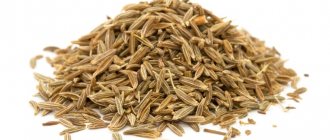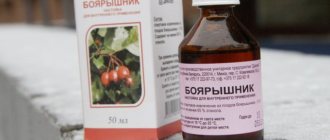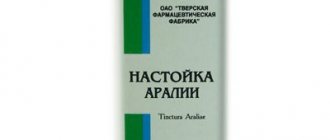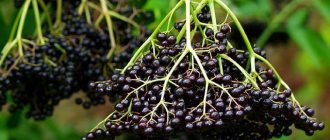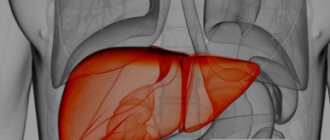After reading the article, you will find out whether you should give Omega-3 to children, and how exactly acids of this class are beneficial for them.
Those who were children in Soviet times clearly remember drinking fish oil. Then it was given to absolutely everyone to improve their health.
Later, the practice stopped, the opinions of pediatricians were divided: some still consider fish oil to be an essential element and advise giving it to children over 3 years old, while others do not consider it necessary to inform mothers and fathers about the benefits of Omega-3.
Therefore, parents have to find out for themselves what the role of Omega-3 is in the child’s body, whether it is necessary to give him fish oil and in what form.
The role of Omega 3 polyunsaturated fatty acids in the child’s body
Previously, all children in kindergartens were given fish oil.
IMPORTANT: Moms and dads should immediately understand that fish oil and Omega-3 are not the same thing. Omega-3 I is a class of healthy essential polyunsaturated fatty acids. Read more about them in the article “Omega-3 - polyunsaturated fatty acids Eicosapentaenoic EPA and Docosahexaenoic DHA: their role in the body. A healthy ratio of Omega-3 and Omega-6 in the body." And fish oil is one of the sources of these acids in nature. 1 capsule of fish oil weighing 1 g contains only 300 mg of DHA and EPA in the ratio, as well as vitamins A, E and D, and other substances.
By the time a baby is born, not all of its organs and systems have time to fully develop. The following continue their intensive development:
- brain and nervous system
- eyeballs and visual system
- Gastrointestinal tract
- immune system, etc.
And if before birth the child received all the “building materials” necessary for the normal course of these processes from the mother, now his nutrition begins to play a key role.
Infant formula with Omega-3.
Most modern mothers consider themselves literate, pay a lot of attention to the development of breastfeeding or choosing the optimal formula, introduce complementary foods according to WHO recommendations, etc. But only a few really understand what quality and composition baby food should be, and that there are fats that are extremely necessary for a child.
IMPORTANT: Omega-3 played a crucial role in the proper formation of the nervous and visual systems of the fetus, you can read about this in this material “Omega-3 - polyunsaturated fatty acids during pregnancy: what are they for? Omega-3 for men and women when planning pregnancy." After birth, they also do not fade into the background.
Each cell of a child’s body is formed, lives for a certain period of time and dies. And it has a shell, a membrane, which largely determines how long the cell will live and how well it will function. Omega-3 acids eicosapentaenoic and docosohexaenoic acids are part of membranes throughout the body, in particular, cells:
- brain
- eyeball and optic nerve
- endocrine glands
Simultaneously with the continuation of the formation of the basic systems of the child’s body, his intensive growth occurs. This results in a greater need for macronutrients and Omega-3.
Summarize
- Omega-3 fatty acids are important for maintaining your baby's overall health.
- Omega-3s are especially beneficial for children's brain health. They may also improve sleep quality and reduce symptoms of ADHD and asthma.
- Eating plenty of foods high in omega-3 can help meet your baby's daily needs. If you want to try supplements, it is best to consult your doctor to ensure the correct dosage.
Tags: Omega-3
- Related Posts
- 6 Side Effects of Vitamin D
- Papain: what it is, properties, uses, side effects
- 12 medicinal properties of royal jelly, how to take it
« Previous entry
Omega 3 – fish oil: why is it useful for children?
If you take and look at the instructions for any Omega-3 drug for children, from the section with indications it becomes clear that it should be given to absolutely all children who have no contraindications.
To get the Omega-3 standard, a child must eat fish 5 days a week.
Likewise, a competent pediatrician in a clinic will clearly describe the benefits of fish oil for children:
- As mentioned above, Omega-3s are the “building blocks” for cell membranes.
- Acids of this class are a natural anti-inflammatory substance; they help the child’s body cope with infections and contribute to the formation of a strong immune system.
- DHA and EPA contribute to the coordinated functioning of the child’s cardiovascular system, which in childhood is subject to serious stress due to intensive growth.
- PUFAs increase stress resistance, which is very important for school-age children.
- Omega-3 affects the child’s intelligence, promotes the development of his basic memory, attention, logical thinking, motor skills, etc.
- In addition to PUFAs, fish oil contains vitamins important for the growth, development and health of the child.
Omega-3 is essential for the growth, development and good health of the child.
Fish oil is prescribed to a child who has the following problems:
- frequent ARVI diseases and frequent complications of ARVI (otitis media, bronchitis, pneumonia, others)
- tendency to allergic reactions
- bronchial asthma
- neurological problems
- visual impairment
- rickets
- pathologies of the musculoskeletal system, nervous, cardiovascular and endocrine systems
- dermatitis and other skin problems
- seasonal or illness-related vitamin deficiency
Omega 3 for children: from what age
When to start giving Omega-3 to children is a very controversial issue.
Typically, fish oil is prescribed to children aged 3 years and older.
Typically, pediatricians prescribe taking fish oil starting at age 3. It is this age threshold that is indicated as the lower one in the instructions for most drugs with Omega-3. Why is this so? After all, it is in the first 3 years of life that a child grows and develops intensively!
The fact is that:
- A breastfed baby receives PUFAs through mother's milk. And she needs to make sure that there are enough healthy acids for both her and the baby.
- Omega-3 is necessarily included in the composition of modern adapted infant formulas.
- Omega-3 is stored by the body. And if the baby received enough of them in the womb, he will have something to spend.
- Young children are prone to developing allergic reactions, and fish oil, as a fish product, unfortunately, is a strong allergen.
IMPORTANT: At the same time, children under 3 years of age are not a contraindication to taking fish oil. In Scandinavia, for example, they are starting to give it to two-year-olds as prescribed.
Omega 3 – smart child, intelligence for schoolchildren
PUFAs are beneficial for the gray matter of a child’s brain, and accordingly, for his intelligence.
- Scientists from the UK have found that the concentration in the blood of Omega-3 (EPA and DHA) in children under 1 year of age who are breastfed or receiving a formula enriched with these beneficial acids is higher than in peers receiving a regular formula. The psychomotor development of these kids is harmonious, their cognitive functions (memory, perception, etc.), attention and motor skills are better developed.
- Preschool children who receive little PUFA are more likely to experience hyperactivity and attention deficit disorder. Their ability to learn is lower.
- Schoolchildren with Omega-3 deficiency become impulsive, irritable, sleep poorly, and this affects their academic performance. This deficiency also negatively affects communication abilities.
IMPORTANT: It is believed that 40% of intelligence is inherent in a person by nature, and he acquires 60%. In order for your baby to grow up smart, quick-witted, and savvy, you need not only to work with him all the time, but also to feed him correctly, to include Omega-3 sources and food supplements containing PUFAs in his diet.
Omegami Smart Child: Omega-3 drug for preschoolers and schoolchildren.
- If a child from 3 to 7 years old attends kindergarten, experiences psycho-emotional and intellectual stress, if due to being in an aggressive environment he often gets sick, if he eats irrationally, consumes insufficient amounts of PUFAs and vitamins, it is worth giving him the drug Omega Smart Child. The capsules contain Omega-3, vitamins A, C and D, drink them during or after meals. If the child cannot swallow the capsule, it is allowed to chew it; the “filling” inside has the taste of blueberries. Dose for a preschooler 3-7 years old: 1 capsule per day. Omega Smart Child can take it , but only 2 capsules. The drug is taken in courses of 1-2 months, 2-3 times a year after consultation with a doctor.
- If a child is already 7 years old and goes to school, in order to improve his mental processes and thinking, and increase his intelligence, it is advisable to give him PUFAs in the drug Omega Intellect for Schoolchild . The drug helps the child get rid of attention deficit, cope with overexcitement and nervous tension, strengthens his immunity, creates the prerequisites for better learning ability and harmonious physical development. Schoolchildren take Omega Intellect for Schoolchildren for 1 month, 2 capsules 2 times a day. Courses should be repeated as recommended by a doctor 3-4 times a year. Children over 7 years old, 2 capsules 2 times a day with meals. Duration of treatment – 1 month. If necessary, the reception can be repeated. Repeated appointments 3-4 times a year are possible.
Omega Intelligence for schoolchildren.
The best chewable vitamins
Delicious gelatin tablets in the shape of animals are great for kids and make taking medicine an element of play. We will tell you which Omega 3 tablet drug is best to choose for a child. The rating included products from Möller, Minisan, Nordic Naturals, and Now Foods.
No. 6 Chewable DHA “Goldfish”, Solgar (America)
Solgar goldfish chew. table No. 90
from 1670 ₽
Buy
The source of vitamins is well-refined tuna fat. The substance is available in the form of ethyl ether. It is better to give the medicine after 4 years. The raw materials undergo multi-stage cold cleaning, which guarantees the absence of toxic compounds, allergens, and gluten. Per serving (2 capsules) contains 48 EPA and 200 DHA. The package contains 90 small chewable tablets.
Pros:
- Children like the taste;
- natural raw materials;
- high concentration of active ingredients.
Minuses:
- more expensive compared to analogues on iHerb.
No. 5 Chewable DHA, Now Foods (America)
Now Foods, Children's Chewable DHA, Fruit Flavor, 60 Softgels
739 ₽
Buy at a discount
For production, fish (tuna) and non-GMO soy are used. The form is ether. The products are manufactured according to international standards, without gluten, dairy proteins, or eggs. Chewable capsules can be taken at any age. Each serving (2 caps) contains 200 DHA and 48 EPA. Pack contains 60 soft gelatin capsules. The recommended dose is 2 pieces per day.
Pros:
- good organic composition;
- Suitable for babies and teenagers.
Minuses:
- No.
No. 4 Smart kids, Fish oil with a high concentration of Omega3, Bioglan (America)
Bioglan, Smart Kids, High Omega-3 Fish Oil, Berry Flavor, 30 Gummies.
627 ₽
Buy at a discount
The drug is produced on the basis of processed tuna meat in the structure of triglycerides. The package contains 30 fruit-flavored chewable tablets. Omega-3 is suitable for children over 3 years of age. Each capsule of the medicine contains 132 mg of DHA and 28 mg of EPA. There are no artificial colors or flavors in the composition.
Pros:
- completely natural raw materials;
- jelly fish with fruity aroma.
Minuses:
- the amount of active ingredient is lower than that of other manufacturers.
№3 Moller Omega-3 Pikkukalat (Finland)
from 1400 ₽
The source of vitamin from the Meller product is fatty fish. Form - ethyl ether. The medicine is approved for use by children over three years of age. Per serving (2 capsules) provides 260 DHA, 60 EPA and 10 mcg cholecalciferol. The package of the Finnish dietary supplement Moller contains 45 gelatin fish with a citrus aroma.
Pros:
- high DHA content;
- pleasant taste and aroma.
Minuses:
- Mollers are difficult to buy in Russia;
- You might end up with a fake.
№2 Fish oil, Minisun Omega-3 Junior (Finland)
from 1400 ₽
Natural fish oil is used as raw material. Form: triglycerides. The Finnish medicine is available in 45 capsules per package. The medicine is intended for children from two years of age. From one serving, a child will receive 378 Omega-3s: 282 mg and 60 mg DHA/EPA. Contains vitamin D3 (10 mcg per dose). According to the manufacturer's instructions, it is recommended to drink 2 capsules per day.
Pros:
- wonderful fruity taste;
- good concentration of active substance.
Minuses:
- not sold on Russian sites.
No. 1 Nordic Omega-3 Fishies Kids, fish with tutti-frutti flavor, Nordic Naturals (USA)
Nordic Naturals, Nordic Omega-3 Fish Candy, Candied Fruit Flavor, 300 mg, 36 Candies
1 456 ₽
Buy at a discount
Purified fish oil is used as a raw material. Form - ethyl ether. The package contains 36 capsules with fruit flavor. Nordic fish can be given to a child after two years of age. The recommended daily dose contains 300 mg of PUFAs: 100 DHA and 150 EPA. It is recommended to take 1 capsule per day.
Pros:
- no GMOs, flavors, allergens;
- delicious vitamins.
Minuses:
- the concentration of DHA is lower than that of other dietary supplements.
Not included in the rating
We included single-dose medications in the list, so it did not include some well-known brands (Vitamishki), which do not produce separate vitamins with Omega-3.
Also, due to inferior composition, the following dropped out of the ranking:
- Complex Omega3 acids – Vitamama (Siberian Health). 1 serving of Omega3 from Siberian Health contains only 92 mg of DHA and 174 mg of EPA.
- Univit Kids vitamins with Omega-3 and choline (only 50 mg Omega3 and the ratio of individual types of fatty acids is not indicated).
- Gummy King DHA Omega-3 (the medication contains only 70 mg Omega3, only 10 DHA).
- Vitatabs Omega-3 Junior (the amount of Omega-3 is 51-102 mg - the large range of values and the low concentration of DHA 40-80 are alarming).
- Teddy Vit Omega-3 (the manufacturer does not indicate any information about the composition and content of Omega 3).
- KAWAI children's fish oil from Japan (no data on the amount of Omega 3, only the content of fat-soluble vitamins and choline is indicated).
Which omega 3 is best for children?
Parents whose childhood fell during the Soviet Union associate Omega-3 with fish oil: a nasty, oily, viscous liquid with a pungent odor. Not only was it hard to swallow, it was hard to smell.
Kids Smart Omega – 3.
But modern children are lucky here too: fish oil is produced for them both liquid and in capsules. Which one is more convenient to take? This substance is aromatized, similar in taste and smell to citrus fruits, wild berries, etc. And there are a lot of these drugs, which makes moms and dads think which one is better. The selection criteria should be:
- Doctor's recommendation. If he recommended any specific drug, it is most likely not its benefits (as they say, “kickback”) that are involved, but also the confidence that this fish oil or vitamin complex is of high quality and works.
- Child's age. Younger children have difficulty swallowing capsules; it is better for them to take liquid Omega-3 preparations. Older children usually take capsules.
- Having allergies. Contraindications to taking fish oil or a vitamin-mineral complex may be an allergy to fish and fish products, as well as to flavorings and flavorings included in the drug.
Smart Omega Baby.
Children most often take Omega-3 as part of fish oil or special children's vitamin and mineral complexes:
- Tutti – Frutti Omega – 3
- Smart Omega baby and Smart Omega for children
- Kids Smart Omega – 3
- Wellness Kids Omega – 3 from Oriflame
- Doppelhertz Omega -3 Kinder and Doppelhertz Omega -3 Junior
Tutti-Frutti Omega - 3.
Medicines in capsules
We suggest parents choose Omega-3 products in capsules for children from the US pharmaceutical manufacturer Nordic Naturals, which is characterized by a very high concentration of docosahexaenoic acid and positive reviews.
No. 2 Children's DHA Xtra Berry Punch, Nordic Naturals (USA)
Nordic Naturals, Children's DHA Xtra, Berry Punch, 636 mg, 90 Mini Softgels
1 437 ₽
Buy at a discount
Source: deep-sea fish oil. Form of triglycerides. The product can be used for children from three to six years old. Children's Omega-3 undergoes several degrees of molecular purification, which guarantees a completely natural and hypoallergenic composition. There are 636 mg of Omega-3 per serving, of which 375 DHA and 165 EPA.
Pros:
- very high DHA content;
- great taste.
Minuses:
- price.
№1 Ultimate Omega, Junior, Nordic Naturals (USA)
Nordic Naturals, Ultimate Omega, Junior, 680 mg, 90 Softgels
1 960 ₽
Buy at a discount
High-quality fish oil (anchovies and sardines) is used as raw material. Form of triglycerides. Suitable for ages 6-12 years. A daily serving of Nordic Naturals contains 680 mg of Omega-3, of which 340 EPA and 245 DHA. The medicine is sold in 90 small chewable tablets in one package.
Pros:
- natural composition;
- strawberry flavor.
Minuses:
- high price.
The German drug Doppelhertz Kinder Omega-3 is excluded from the list, because the manufacturer indicates only the total amount of PUFAs without specifying the Omega content.
Omega-3 preparations for children: reviews
Parents, in their reviews on Internet forums, note the positive impact of Omega-3 drugs on the well-being and behavior of their children:
- Ekaterina : “Until the age of two, my son and I had bronchitis four times, four times we were in the hospital. And they didn’t get out of the snot at all. Our family doctor is a grandmother, of Soviet origin. She said, “You give him fish oil.” I bought a liquid one from a Norwegian company and started giving it half a teaspoon. Thank God, for six months now illnesses have passed us by.”
- Svetlana : “We drink Omega-3 for schoolchildren. We didn’t get excellent grades, but our eight-year-old daughter became more diligent, got less angry, and wasn’t as aggressive. Now I’ll give it to her a couple of times a year.”
- Inessa : “My daughter is a very busy child. At 10 years old - school, dancing, pole gymnastics, swimming and additional English. When she starts to lose weight, I give her Smart Omega. The second wind opens within a week after taking the first capsule, the child is full of strength again, she even finds time for girlfriends and the Internet.”
